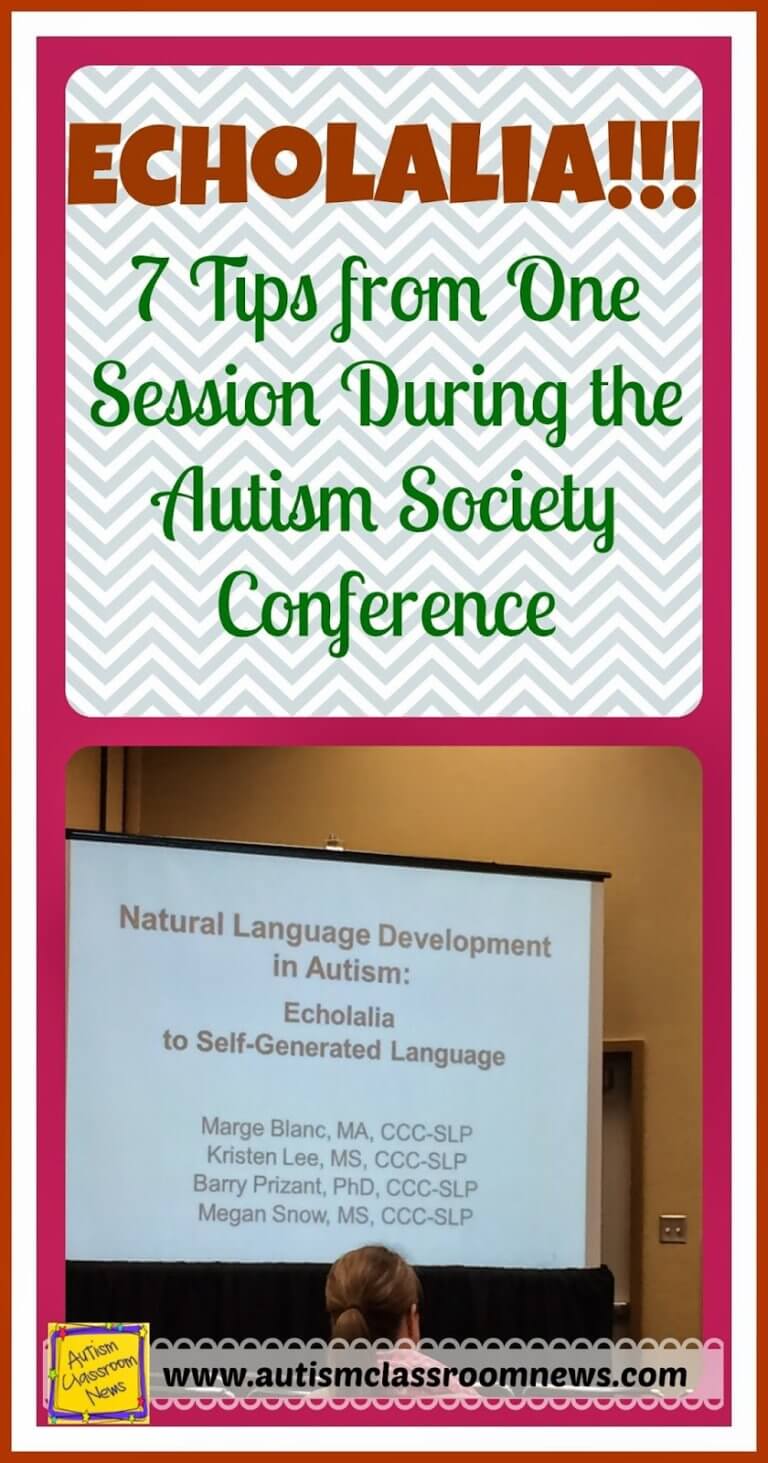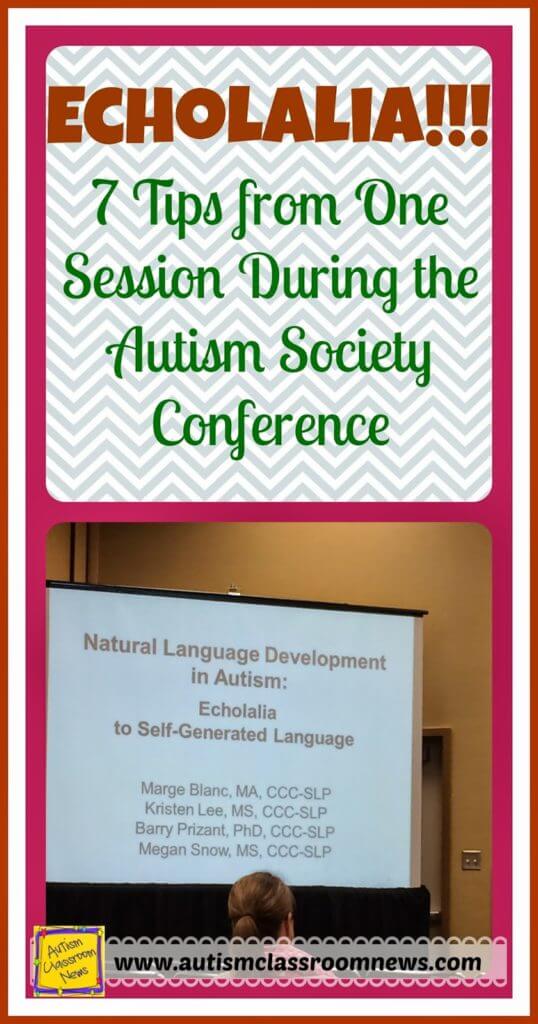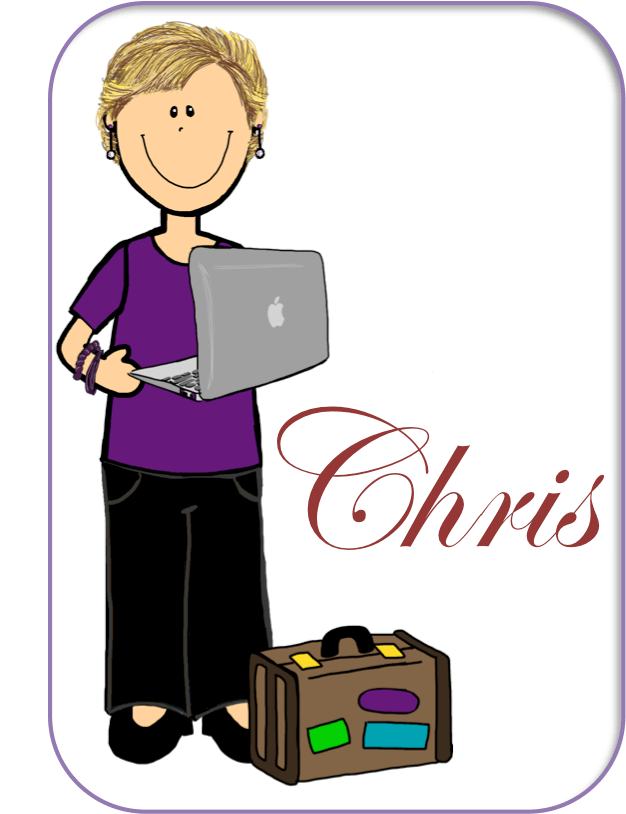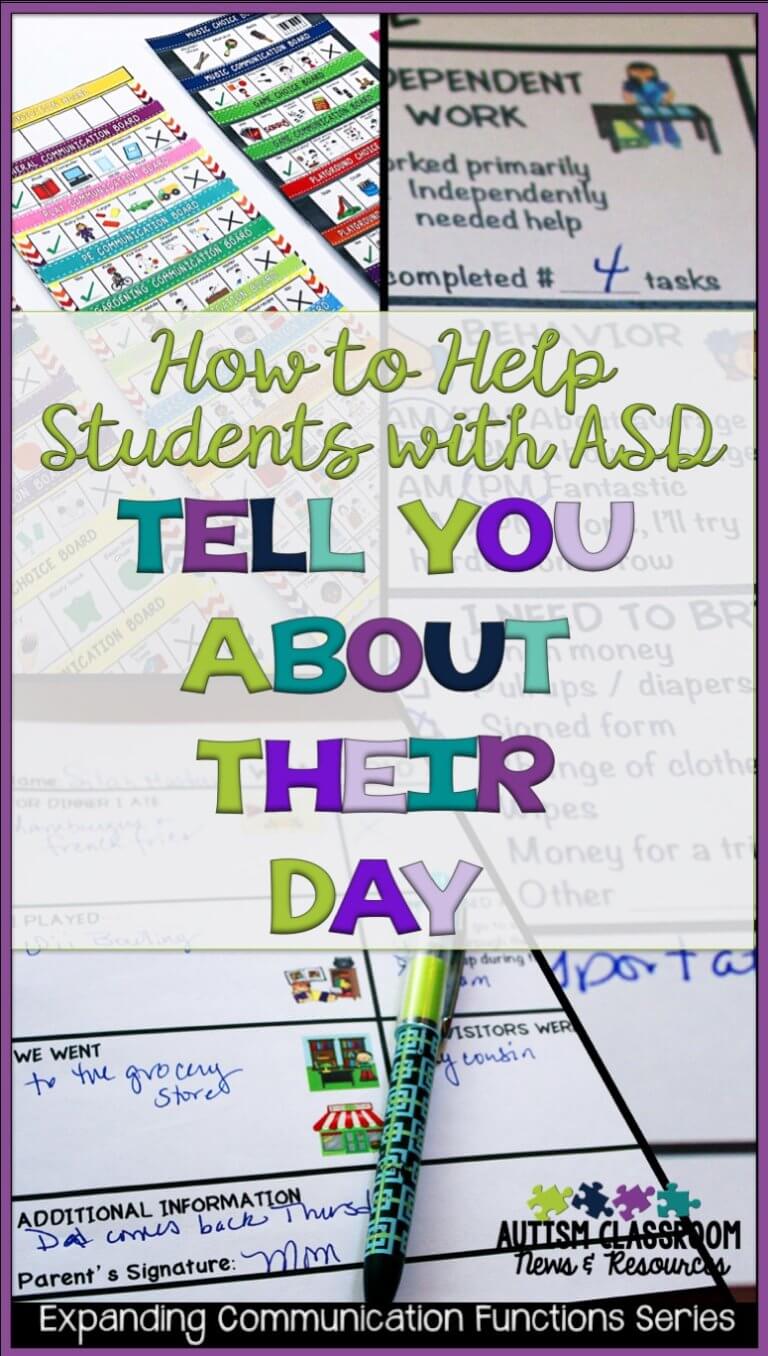Wow, the Autism Society conference was great! I always love seeing colleagues that I see once or twice a year, collaborating with our NATTAP group, meeting people during my presentations and getting great information from others’ presentations. I got to hear Temple Grandin again and her talks are always fascinating. I saw a good friend and colleague, Kathy Gould, get a much deserved award as Professional of the Year for her work in autism in Illinois. I presented on creating behavior support plans that meet the requirements I talked about in my last post. And today before I left for the airport I went to a talk on working with echolalia to get to functional language. When I posted the title slide on Instragram I had several requests for sharing what I had learned. So, I thought I would do a quick (yeah, I know, my blog posts are never quick!) summary of some of the points we discussed and then tomorrow or Monday I’ll get back to talking about behavior support plans (I promise!).
I’m also going to include some background information about echolalia here for those who aren’t as familiar. The talk was a little technical for me, since I’m not a SLP, but I will share what I think the overall approach is and what I know about echolalia to help with your students who use it. The presentation was by Marge Blanc, CCC-SLP and Kristen Powell Lee, CCC-SLP. You can find out more about their approach in this article and this one.
First, echolalia, if you aren’t familiar with it, is when a student repeats what he or she has heard. This can be immediate echolalia, where he repeats what you just said or what he just heard. It can also be delayed echolalia, when he repeats things heard in the past–this is typically when individuals are repeating scripts of movies, TV shows or even phrases or statements he/she has heard in the past. So that student you have who talks just like Blues Clues is typically using delayed echolalia. Typically these types of echolalia present as chunks of language (they call it the gestalt) that is plopped into the interaction. It may be appropriate or inappropriate for the situation, but it typically involves a string of language, often with the same intonation that occurred when they heard it (e.g, “And now presenting our main feature!”). You can learn more about the functions of immediate echolalia here and delayed echolalia here and I will do a series about echolalia in the future.
They talk about moving students from their full echolalia where they are using huge chunks of language, that may sound very sophisticated but that typically don’t really tell you anything, to actually shortening or simplifying their language by modeling and reinforcing more accurate use of language in smaller chunks. So, for an individual who often says “Let’s get out of here” and “Want some more?” you want to move to being able to say “Let’s get some more” and “Want to get out of here.” In the middle you might get “get out” and “get more” and work your way back up to the bigger phrases.
Essentially their steps begin with understanding the function of the echolalia. Just like functions of behavior echolalia serves a function for the individual. They are trying to communicate something. Reminiscent of Temple Grandin’s examples, think about trying to put together language to communicate what you want when you only have tape recordings of specific phrases. First you have to take the phrases apart and then you can put them together again. When you do that you begin to get spontaneous language that is used more functionally and flexibly. That means language can change when circumstances change.
Take Away Tips (some of these are based on the presentation and some are from me):
- Echolalia serves a function and we have to figure out what that is and shape language into being flexible and functional. Don’t just try to get rid of it.
- Just because the student is talking doesn’t mean his speech is functional. Functional, flexible speech that is more basic in structure is more useful than grammatically correct, sophisticated speech that doesn’t tell you what the person means.
- Sometimes you have to break their language down to build it back up in a more improved version. They talked about echolalia phrases being towers that sound very sophisticated but aren’t portable or flexible. You have to break the towers down and rebuild them as towers and concert halls and houses, etc. so that they can be useful.
- You can use this with people of any age. Language development shouldn’t be restricted to early intervention.
- Be quiet. It’s so tempting to talk over a child when teaching language and think you are providing a model.
- Use a child-perspective model at the same level or one step ahead of the level of his/her language. That is, model language the way you want him/her to say it (You say, “I want a cookie” rather than “You want a cookie”) so that when the individual repeats it he has the words he needs. Also don’t use long strings of words when you are helping him break down his language into one or two words. Use a model that fits the level of language you expect him/her to use. If he is using two words functionally, model 3 word sentences.
- Don’t focus on the details of grammar and even word order at first. If words are backwards (e.g., cookie want) you can model and shape them over time, but that also means they aren’t a script, so it’s real language.
Until next time,








